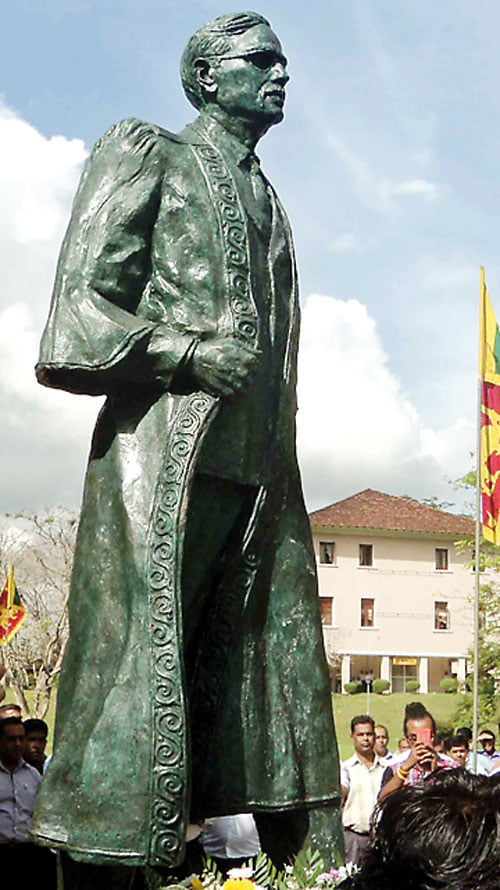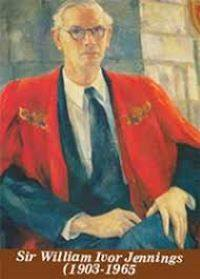Sir Ivor Jennings – “University is a community with a life and spirit of its own” Ivor Jennings


“University is a community with a life and spirit of its own” Ivor Jennings
Sir William Ivor Jennings, KBE, QC, FBA (1903 –1965) Prominent educator, Originator of University of Ceylon and Vice Chancellor (1942–54) was not an elitist. From humble beginnings he worked his way through scholarships to Cambridge, where he excelled first in mathematics and then in law, ending with first classes in both. He was a left leaning liberal, thus, it was not his objective, to build university of Ceylon for the sons and daughters of the elite class. It was an elite university that he dreamed of, a place to nurture people of moral and intellectual stature, a place to produce the future leaders, for the independent nation.
Peradeniya had the ideal setting for Jennings’ aspiration. He concentrated on his main task of providing the kind of university the honest, humble humorous people of Sri Lanka deserved.
Thanks to his vision and perseverance we have in Peradeniya an architecturally proud set of buildings worthy of the traditions of this country. Jennings understood the University’s task and real need of the undergraduates at the time as evident from his words of wisdom. “Though academic work looms largest in the life of an undergraduate, the University’s task is much wider than mere training up to degree standard. A University is a world of its own in which the undergraduate should acquire wisdom as well as learning… The University is more than a teaching establishment. It is a community with a life and spirit of its own, a community, membership of which is a privilege, and a community which the student –for he always remains a student – never leaves”
Jennings, in his memoirs posthumously published as “Road to Peradeniya”, says that when he first drove up to Peradeniya in March 1941 and up the Old Galaha Road and finally waded through the shrubs towards the proposed site for the university, he saw the vision, and magnificent at that, of his new University. Peradeniya University, in its initial phase in the early 1950s, had a unique architectural theme, not just in its buildings, but in landscape, in the flora, which mingled with the wider scenery of the place, the river and the hills.
Its architecture was a blend of traditional and Kandyan coupled with modernity in space and light. The University architect Shirley D’Alwis designed it to perfection, taking a leaf from his mentor, Sir Patrick Abercrombie who was renowned for interest in maintaining the classic English rural environment in town planning. Shirley D’Alwis brought those concepts to Peradeniya, blending the built environment with nature just as it was done at Sigiriya.
The setting of Peradeniya, its halls of residence, its lecture theatres, its libraries and the playing fields, all give an indication of the thinking of its originator, Ivor Jennings.
Peradeniya University now referred to as the ‘Garden University’ won international recognition as one of the ten most beautiful universities in the world.
Sir Ivor Jennings was conferred the Doctor of Laws at the general convocation of the University of Peradeniya in 1954 and the University Teachers Association presented a portrait in oils by the renowned Sri Lankan artist, David Paynter. The Government, in appreciation of his services to education in Sri Lanka, issued a stamp in 1990 in the denomination of 75 cents.
There is no doubt that Sir Ivor Jennings’ name will be honourably linked with the University of Peradeniya for all time. In fact, the University of Peradeniya is the most enduring monument to him. We Sri Lankans owe a deep debt of gratitude to Sir Ivor Jennings whose erudite scholarship and eminent foresight guided this country’s higher education in its formative stages.
Sir Ivor Jennings left Peradeniya in December 1954 with his wife, in his Ford Anglia without much fanfare amidst a grateful group of students and well-wishers. His statue was unveiled by his granddaughter Rebeca Caine in 2017.








No Comments